Strolling along the local bike path with your pooch, another dog – nearly just a blur – shoots past you. His tongue is lolling, and he’s stretched into a gallop. He looks thrilled. Should you call out to his owner? Is he an escapee?
Then you realize there’s a long bungee attached to the dog’s weird-looking harness, and his owner is rocketing along behind him. It looks crazy and fun!
It’s called urban mushing, and you immediately know that have to try it.
Urban mushing is an umbrella term for summer sports where your dog helps pull you forward. Generally, this is done with just one dog. Urban mushing might be done on foot, on a bike, on a scooter, or in a cart.
How on earth can you get involved in urban mushing? This looks like an incredible way to exercise your dog (and yourself) while expanding your training skills.
Let’s take a deep dive into urban mushing.
Urban Mushing: Key Takeaways
- Urban mushing is an umbrella term that refers to a number of sports in which your dog pulls you. It was originally developed by serious dog mushers to keep their canines in shape during the offseason, but it has spread to the general public in the last several years.
- Urban mushing takes many different forms. Some owners have their pup pull them on a bicycle, others prefer scooters, skateboards, or carts, and some owners simply like to run behind their pupperinos — there’s something for everyone!
- You’ll need to teach your dog a few commands and acquire some equipment to enjoy the sport safely. Among other things, you’ll need to teach your dog to move forward, stop, and turn right or left. Equipment wise, you’ll need a proper harness, gangline, and some safety gear.
What Exactly Is Urban Mushing?
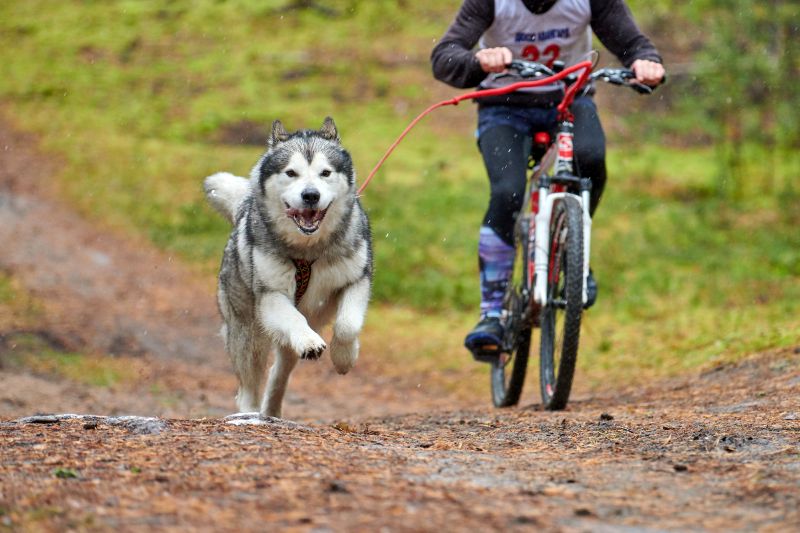
Urban mushing encompasses several different sports in one name. It’s also known as dryland mushing (sometimes called dry land mushing) to differentiate it from traditional mushing that takes place on snow.
Essentially, urban mushing includes any snow-free sport in which your dog helps pull you forward.
This group of sports was invented to keep racing sled dogs in top shape over the summer. But urban mushing has quickly gained popularity among the non-sledding crowd as a way to exercise high-energy dogs (especially those that love to pull).
What Are the Different Kinds of Urban Mushing?
There are actually a few different “flavors” of urban mushing, thereby giving you and your pooch a few different ways to enjoy the sport.
Typically, the term “urban mushing” includes canicross, bikejoring, scootering, carting, sulky and skatejoring. Some argue that skijoring (where your dog pulls you on cross-country skis) is neither urban nor dry land, so it’s not generally in this list.
Let’s take a minute to look at each subcategory of urban mushing:
We’ve already put together a guide to canicross and another guide to long-distance running with your dog, so we’ll mostly focus on the other aspects of dryland mushing below.
Canicross
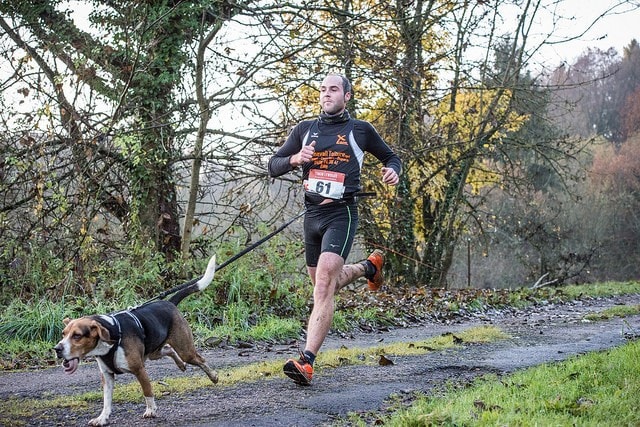
Canicross is the least equipment-intensive version of dryland mushing, but it also requires the most legwork on the human end.
In this sport, your dog gives you a boost by running ahead of you on a hands-free bungee hip leash while you run cross-country behind him. This sport is probably the least expensive way to test the waters with dryland mushing, and is probably the safest option for new human handlers.
Alternatively, if you just want to jog with your pup, you can learn how to teach your dog to run alongside you rather than embarking on canicross, which is more of a team effort with your dog helping to pull you.
Bikejoring
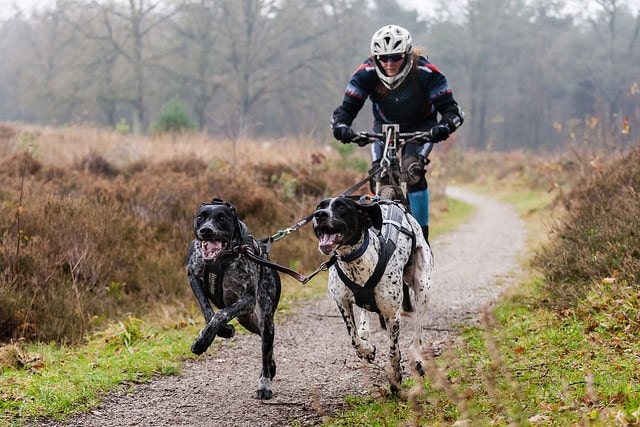
For those who don’t want to purchase a bunch of extra equipment but prefer cycling to running, bikejoring is a good option. This sport entails using a special bike leash rig setup, so that one or two dogs can help pull you on your bike.
This sport does require some modification to your bike so that your dog’s gangline (a fancy word for a bungee leash) doesn’t get tangled in your bike spokes. Of the wheeled urban mushing options, bikejoring requires the least specialized equipment.
Scootering
Biking behind your bestie sound a little intimidating? You may want to try riding a kick scooter instead!
Kick scooters offer a bit more stability than bikes do (as well as the ability to easily jump off without tumbling). They’re also popular with some dryland mushers who go out a lot because they feel more stable and controllable.
Unfortunately, most of us don’t have kick scooters lying around our garages. To try scootering, you’re probably going to need to spend some money on new gear.
Carting
Especially popular with large dogs such as Swiss mountain dogs and Newfoundlands, carting involves hooking your dog up to a wheeled cart and having him pull a load a specific distance.
But it isn’t just for big ‘ol pooches; carting is also a great option for smaller dogs who aren’t strong enough to pull their people but still enjoy the challenge of pulling. It’s also a great option for training-savvy pet parents who would like the dog to pull a stroller!
Skatejoring
For the true adrenaline-junkie, skatejoring allows your dog to pull you on your skateboard or rollerblades. This sport is a bit less well-known and looks pretty scary to those of us who aren’t comfortable on a skateboard, but it can be a blast for those with the necessary skills (and courage).
Skatejoring has a bad rap in some communities because of the tendency of inexperienced dabblers to head out without the proper pulling equipment for the dog and safety equipment for the owner. But if you get the right gear, skatejoring can be an exhilarating way to exercise your dog!
Using a Sulky
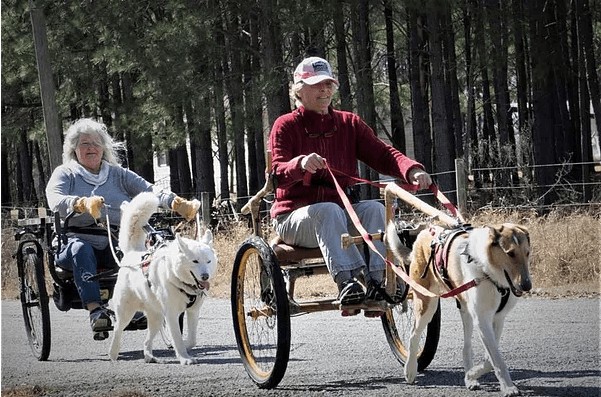
A bit like a chariot or a dog-drawn carriage, a sulky allows you to sit in a two-wheeled cart while your dog pulls you along. Unlike carting, sulky is not a good option for small dogs who can’t pull much weight — this is an activity for big-and-strong floofs.
However, it’s a relatively stable option for humans, and it makes a great alternative for those who’d rather not use a bike or scooter.
Tell me this doesn’t look like a blast!
The Benefits of Urban Mushing
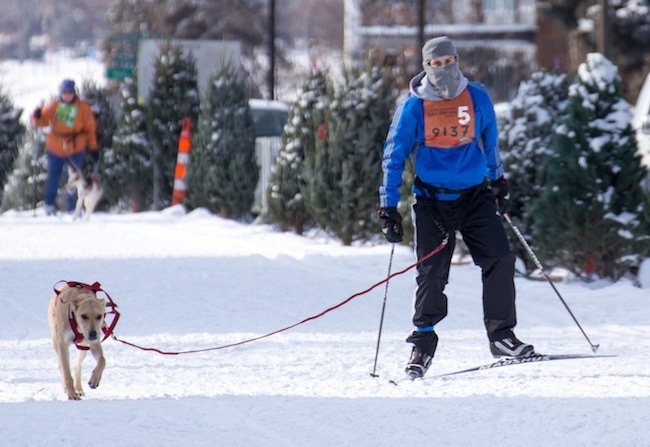
Now that you’re familiar with the subgroups within urban mushing, you might be wondering why you should try this instead of just taking your dog for a longer walk.
If urban mushing requires so much equipment and exercise, shouldn’t you just do something else?
When I first brought my border collie Barley home, I thought I knew what it meant to have an energetic dog. I was ready. I’d walk him three times a day, we’d play fetch, and maybe we’d hike on the weekends. It’d be fine, right?
Well… kind of.
For these super high energy dogs who love running (I’m looking at you, pointers, huskies, and herding dogs), a few walks and a bit of fetch isn’t really enough most days. They generally need a bit of a sustained workout and some mental exercise as well.
That’s where I discovered urban mushing.
Together, Barley and I have dabbled in scootering, bikejoring, canicross, and skijoring. He and I can certainly attest to the benefits of these sports!
Urban mushing can really help you and your dog in a variety of ways — it’s not just about the calories burned. A few of the most notable benefits of urban mushing include:
- It gives you another way to bond with your dog. Getting out and doing just about any activity with your dog is one of the best ways to really deepen your bond together. Even if your dog is out ahead of you on a gangline, the time you spend mushing together will really help strengthen your relationship in a whole new context. You’ll really learn to trust each other and work together as a team, and this can help improve other aspects of your partnership as well.
- It’ll help you and your doggo burn some excess energy. Of course, one of the biggest benefits to dryland mushing is that it’s a great workout (and as is always the case, extra exercise can be helpful for addressing behavioral issues). Depending on which form of dryland mushing you pick, you’ll find yourself getting stronger while your dog builds muscle! If you’d rather choose a form of urban mushing that isn’t as exercise-intensive for the owner, look into sulkying or carting instead of bikejoring or scootering.
- It gives your pet a chance to learn new skills. Basic urban mushing cues are surprisingly helpful in day-to-day life. Whereas most owners would never think to teach their dog the commands “right, left, go straight, slow down, speed up, stop right there,” or even a “flying leave it,” it’s not hard to see how these mushing cues could be helpful in your daily life together. In fact, you might find yourself using mushing cues on your daily walks.
While most people start investigating urban mushing because they’d like to tire out or calm a hyperactive dog, this sport isn’t limited to just the energizer bunnies of the canine world.
Many dogs relish almost any opportunity to get outside and stretch their legs (especially with their beloved owner), so don’t hesitate to try urban mushing, even if your dog isn’t scary-energetic.
If you are thinking about getting into urban mushing, consider checking out a dry land mushing event.
While these events aren’t easy to find in all locations, many large metropolitan host them regularly. Attending a dry land mushing event as a spectator is a great way to decide if you really want to spend the time and money to get started.
Which Dogs Are Right and Wrong for Urban Mushing?
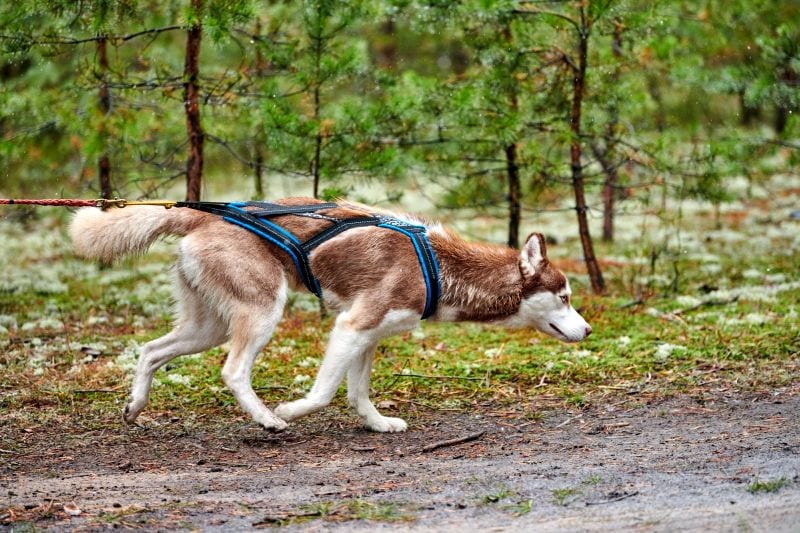
Some breeds — particularly high-energy breeds — appear to be born to mush. This would include:
- Siberian huskies
- Alaskan malamutes
- Pit bull terriers
- Samoyeds
- Newfoundlands
- Labrador retrievers
- Canadian Eskimo dogs
- Most pointers
This list certainly isn’t exhaustive, but you get the idea. Also, note that even relatively small dogs can partake in urban mushing, as long as you’re OK with giving them assistance up hills, adjusting the load to ensure it is appropriate for their size, and keeping your sessions short.
However, some dogs probably should steer clear of urban mushing altogether. For example, dogs with joint pain, or orthopedic issues, such as hip dysplasia, may find this sport really uncomfortable.
Also, brachycephalic breeds (dogs with flattened faces and short noses) should sit this one out, as aerobic sports like pulling can be flat-out dangerous. So, you’ll have to find another way to spend time with your pug, shih tzu, French bulldog, or boxer.
And no matter what your dog’s face looks like, you’ll want to speak to your vet to make sure your canine is physically fit enough to start a pulling sport. Urban mushing should be a fun challenge, not a painful slog!
Urban Mushing Equipment: General Gear You’ll Need
The equipment that you need to start one of these sports will vary drastically based on what variety of urban mushing you choose to try. First, we’ll cover the basic things you’ll need for all types of urban mushing, then we’ll explore more specific equipment options for each individual sport.
All urban mushers will need:
A harness designed for pulling. Unfortunately, your dog’s day-to-day harness (even my beloved Ruffwear Front Range Harness) is not made for pulling, so you’ll need a harness designed for dogs who pull.
It is especially important to avoid no-pull dog harnesses and neck collars. This just plain dangerous for your dog.
Conversely, a harness designed for pulling helps your dog lean comfortably into the activity, while also distributing the weight load back onto your dog’s hips.
A good pulling harness will look a bit different, depending on whether you need one for carting or sulky, or you need a side-by-side setup.
Otherwise, for all other mushing efforts, the Ruffwear Omnijore (which includes a gangline and a human harness with a quick-release) and the Neewa Harness are both good bets.
A gangline. You’ll need a way to connect your dog to whatever it is that he’s pulling. A good gangline should be at least 7 feet (2 meters) long. If you’re considering using your setup in the snow or cold, be sure that you can handle the clip with gloves on.

Safety equipment. If you plan on trying bikejoring, skatejoring, or scootering, get yourself a helmet. A bike helmet will probably do the trick for any of these activities, but use your own judgement when shopping.
You might also want to consider gloves (to save your palms), knee pads, and booties for your dog.
In the past when I’ve gone bikejoring, I wore gloves along with a helmet, but Barley usually went “barefoot.”
A driving collar. Most of the time, you’ll want a “driving collar,” which is a fancy name for a comfortable flat-buckle collar. This is important for keeping your dog in place while you’re getting the harness on (most of these harnesses take a bit of work) and a driving collar can also work as a back-up with a safety line attached.
If you’re mushing with two dogs, some setups connect the dogs using the collar so they can’t cross lines. Most setups allow you to connect an extra safety line to this collar, and some competitions even require it. You can probably just use your dog’s current flat buckle collar.
You’ll also want to bring along some water for you and your dog.
Aside from these basics, the rest of the urban mushing equipment is specific to each sport.
Urban Mushing Sport-Specific Equipment
In addition to the general things discussed above, which all urban mushers will need, there are a number of sport-specific things you may need to enjoy urban mushing with your mutt.
Canicross Equipment
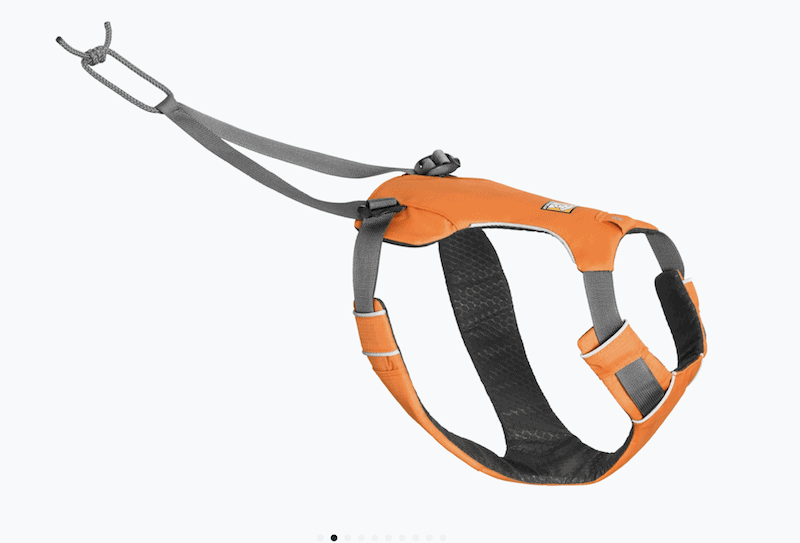
You will need a hip belt for yourself that allows your dog to comfortably help pull you in canicross.
A normal waist leash isn’t made to sit comfortably on your hips while your dog pulls, so be sure to get a specialized setup. I personally use the Ruffwear Omnijore system (discussed previously) for canicross and skijoring. You generally won’t need a helmet for canicross (unless you’re especially clumsy), but always use your best judgement.
Bikejoring Equipment
Obviously, you’ll need a bike to go bikejoring. But once you’ve got that box checked off, you’ll still need a bike attachment and a system to keep your dog’s gangline from getting tangled in your front wheel.
One of the best products around for this is the Scooter Noodle, which holds your gangline away from your wheel even if your dog slows down.
Scootering Equipment
A dog scooter or a canine-friendly kickbike is a hefty investment, but it’s worth it for dedicated urban mushers.
These nifty setups allow you to leap away from the vehicle more easily than a typical bike, in the event of a crash. As someone who’s taken a tumble on both a bikejoring and scootering trip, I can say that the urban mushing scooter fall was less painful!

Again, as with bikejoring, you’ll also want to get a Scooter Noodle or similar setup to keep your gangline out of your wheel.
The dog-powered scooter is another option that’s a bit different than the traditional scooter setup, with you scootering right alongside your dog.
Carting Equipment
Aside from a specialized Siwash harness, your carting setup will need a pair of shafts and tracers to help connect your dog to the cart.
The shafts are the metal or wooden protrusions from the cart that connect to the harness. Tracers drape across your dog’s back near his waist and connect to the front of the cart.
Most carts are handmade and should be customized to fit your dog, so it’s best to get connected with a carting club to get some recommendations. Carting is relatively equipment-heavy and much of the equipment is hard to find, so it’s nice to have a mentor in this sport!
Sulky Equipment
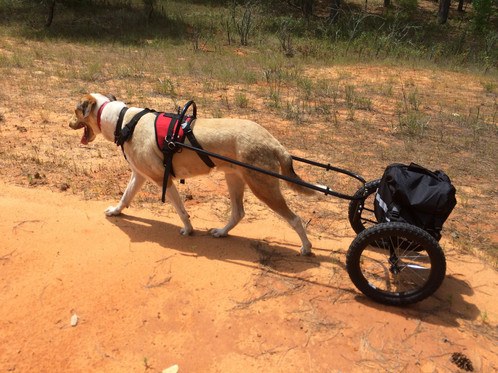
Like with dog carting, sulky requires a bit of specialized equipment that you’re not likely to find on Amazon (let alone at a local store).
A sulky harness actually helps protect your dog’s back from the tip of the shaft. Most sulky carts are also custom-made, and this shop, Chalo Sulky, is a great place to start.
Skatejoring Equipment
Most people choose to hold their leash rather than having it attached to their hips while skatejoring.
Nevertheless, you’ll still want a leash or gangline with a bit of give, rather than a plain nylon leash. This will help reduce the shocks you feel and keep you vertical.
Aside from that, skatejoring requires standard safety equipment and a skateboard or roller blades, making it a relatively equipment-light option. But as when enjoying any pulling sport, ensure that you have a harness that evenly distributes weight for your dog.
Urban Mushing Commands: Gee, Haw, & More!
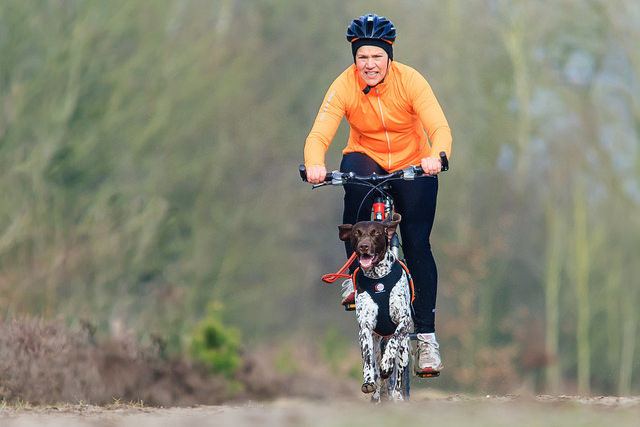
Now that you’ve got your equipment in in order, you’re probably excited to hit the trails. Before you pack out for the local bike path, let’s make sure you and your dog have the necessary skills.
Teaching most urban mushing commands is relatively easy to do during your daily walks. Let’s go through the most common mushing commands and how to teach them.
It’s often easiest to teach these cues with an experienced dog, but that’s not always possible. Most of these cues are not difficult to teach if you’re diligent about practice on your daily walks.
Right, Left, and Go Straight: Gee, Haw, and Straight Ahead. Teach these during your daily walks by saying “gee” for right and “haw” for left before turning in the given direction, then guide him with your leash and body. Likewise, simply say “straight ahead” when you reach a junction that you’ll travel straight through.
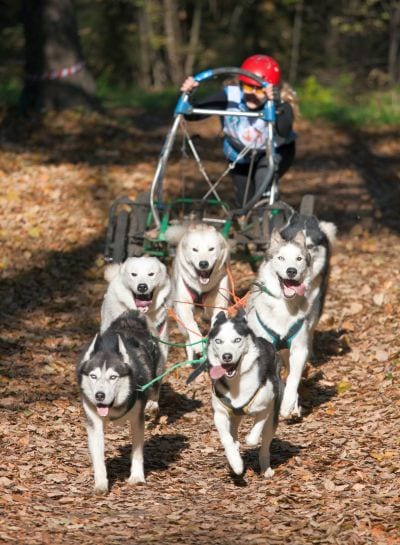
Praise your dog or toss a treat in the correct direction to really send a good message. After about 30 repetitions of this, start giving the cue without turning and then reward your dog if he gets it right. Try not to turn or give any other body language hints to establish that Rover has really learned the lesson.
Solidify this skill further by practicing while traveling faster or working in distracting environments. Bike paths and heavily forked biking trails are an excellent place to practice as well. For dogs that really struggle, T-shaped hallways make a slightly easier practice area.
Run Past Something: On By. This is similar to a “leave it” command, but it tells your dog to ignore something and run by it. Again, you can practice this on walks by giving the cue and then running past something.
It’s often easiest to teach this if you make going “on by” really fun.
So, make a fuss with lots of squealing, running, praise, and training when you first start teaching this skill. This will help your dog learn that “on by” means to accelerate and ignore something.
Stop Moving: Woah. Teach this by saying “woah” and then stopping on walks. Don’t pull on your dog’s collar, but he’ll notice that “woah” is followed by a bit of pressure on the leash. Most dogs will learn to stop when they hear “woah” pretty quickly if you are consistent.
This might be less successful for dogs that are used to you giving corrections via the neck collar.
In that case, attach the leash to your waist so that you don’t accidentally jerk on his neck (old habits die hard). Then say “woah” and simply stop moving. As soon as your dog produces slack in the leash, toss him a treat.
Go Faster: Hike, Hike! This one is generally fun for dogs, and relatively easy to teach. It’s often easiest to teach when paired with “wait,” but you can also teach it on its own.
Don’t be afraid to do some accelerations along your walks or runs where you say “hike, hike,” then break into a trot, jog, or sprint to teach your dog that “hike, hike” really means to go faster!
Stay Where You Are: Wait. Many people teach this one at doorways and crosswalks. Simply say “wait” while you prevent the dog from going forward.
You can pair this with “hike, hike” by releasing the dog from his “wait” with a “hike, hike” cue! Most dogs quickly learn to wait on cue, then surge forward when told to.
Easy: Slow Down. This one is tricky! Once dogs get going, it’s often easier to stop them completely than to slow them down.
Again, I teach this by simply giving the cue and then performing the action. After some time, most dogs will respond to the cue without the guidance from the leash.
Tighten Up the Leash: Line Out. Some dogs love running but aren’t great at pulling. For these dogs, a cue like “line out” reminds them to tighten up the leash and put their backs into it.
Generally, people teach this by putting the dog in his harness, attaching his gangline to a tree or a fence, and walking out of reach. As soon as your dog tightens the line, reward. Repeat, then start adding the cue. Only then can you start to move behind the dog while giving the cue.
If you’re really struggling to teach your dog these cues, one of the best ways to get a leg up is by using an experienced dog to teach yours. Find a local mushing club and hook the dogs up together — it will really kickstart your dog’s skills!
Daphne Lewis also has a handy video on YouTube (although it is a bit old and the quality could be better), showing how to start teaching your dog to pull a cart.
Is Urban Mushing Dangerous?
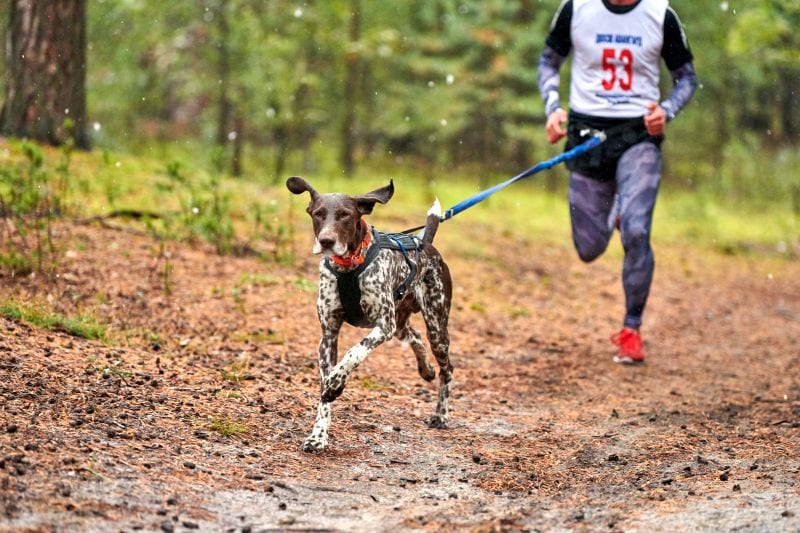
Like any sport that involves wheels and dirt, urban mushing can be a bit painful at times. Throw a high-energy husky into the mix, and it’s only fair to expect a few bumps and bruises.
Wearing appropriate safety equipment will certainly help reduce the chances of injury, but there are no guarantees. Accordingly, you need to use good judgement and always err on the side of caution.
For example, it’s important to ensure that the trail you’re on is wide enough and mellow enough for your skill level and chosen sport. Don’t head out down the local ski hill on your first trip with your kickbike!
Properly training your dog to slow down and wait is also incredibly important for safety. The worst injury I’ve received from urban mushing (a twisted finger on a kickbike ride) was thanks to one of the dogs I was running not stopping when cued to do so.
Another reason why I got a bit bruised on my kickbike ride was that I had already fallen off the bike, but I didn’t let go! I didn’t trust Barley’s running partner to stop at all, and I really didn’t want to lose the dogs.
This is why it’s so important to focus on good training! If I trusted the dogs to stop, I could have saved myself a fair bit of pain.
When I didn’t to let go, I was dragged behind the dogs for several feet until Barley nipped his traveling companion in the butt!
Ouch.
Finally, it’s important to ensure that you’re complying with local trail laws and norms.
For example, the Platte River Trail is full of runners with headphones in. We were always extra-careful not to startle runners when we passed them. Another local Denver trail, the Apex-Enchanted Forest Loop, mandates that all bikes go a given direction on certain days of the week. Breaking the rules makes urban mushers look bad and can result in a fine for you!
Teaching your dogs to politely pass others and always cleaning up after your dogs will help keep the rest of the community welcoming of urban mushers on their trails.
Keeping Your Dog Healthy When Urban Mushing
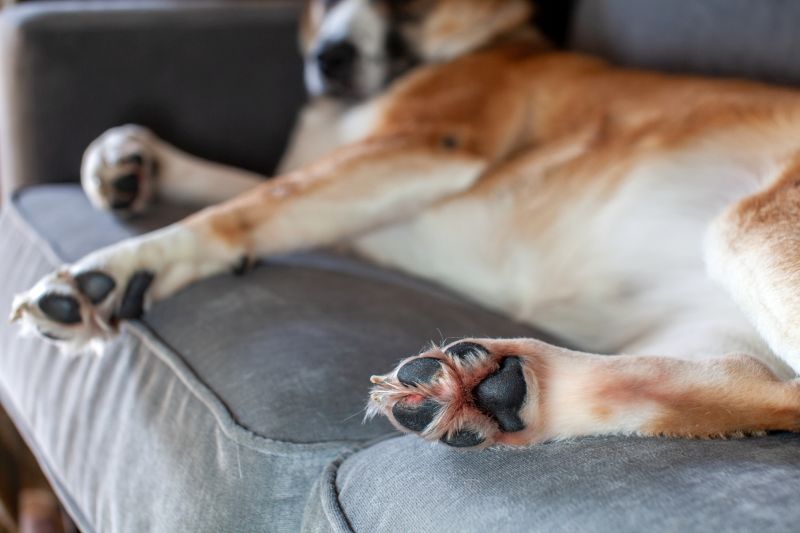
When you’re involved in urban mushing, you’re essentially turning your best friend into a canine athlete. And just like a human athlete, canine athletes need a bit of extra care to stay in top shape. Neglecting your dog’s health can cut a career short, or worse, cause injury that will leave her in pain for years.
So, keep the following tips in mind when urban mushing with your doggo:
- Don’t push your dog too hard. On the canine end of things, don’t push your dog too far too fast. Just like you shouldn’t go straight from the couch to 26.2 miles for a marathon, your dog needs a long-distance running training plan, plenty of rest days, and some cross-training for good measure.
- Don’t over-train your dog or force him to run when he’s sick or injured. For safety’s sake, only go out urban mushing when your dog is healthy. Also, generally speaking, you should avoid running on pavement as well. It’s just too hard on your dog’s joints.
- Consider hiring a canine fitness trainer. A certified canine fitness trainer can help you create a plan for massage, stretch, core strength, and cross-training to keep your dog in top shape.
- Keep a basic first aid kit with you. I always have some Musher’s Secret Dog Paw Wax, some gauze and tape, alcohol wipes, and nail clippers. That will take care of most paw injuries until we get back to the trailhead.
If you’d rather not piecemeal together a collection of first-aid supplies, you can always just pick up a prepackaged dog first-aid kit!
Urban Mushing FAQ: Your Questions Answered!
Still have a few lingering queries about urban mushing? We’ve got you covered! Check out some of the most common questions and answers about the sport below.
Is mushing cruel?
Opinions will certainly differ on this question, but many dogs appear to love the sport. So, as long as the dogs’ safety and well-being are kept in mind, and the sport is limited to those dogs who appear to enjoy it, we wouldn’t characterize it as “cruel.”
How is urban mushing different from dog sledding?
The primary difference between urban mushing and dog sledding is that the former takes place on dry land, while the latter takes place on snow- or ice-covered ground. Dog sledding also involves an entire team of dogs at times, whereas urban mushing is generally limited to one or two doggos.
What is dryland mushing?
Dryland mushing is often used as a synonym for urban mushing — it simply refers to the fact that the ground is free of snow or ice.
Do sled dogs get whipped?
Certainly not by compassionate mushers! Whipping dogs is nothing short of animal cruelty and we denounce it in the strongest terms. There is no need to whip sled dogs for typical or urban mushing — positive reinforcement is always key!
Why do mushers say “mush?”
It isn’t entirely clear, but the word “mush” likely arose as a derivation of the French word marchons, which means “to move.”
***
Have you tried urban mushing yet? What do you find most exciting about the sport? Are you a member of a local mushing club? We’d love to hear your stories!
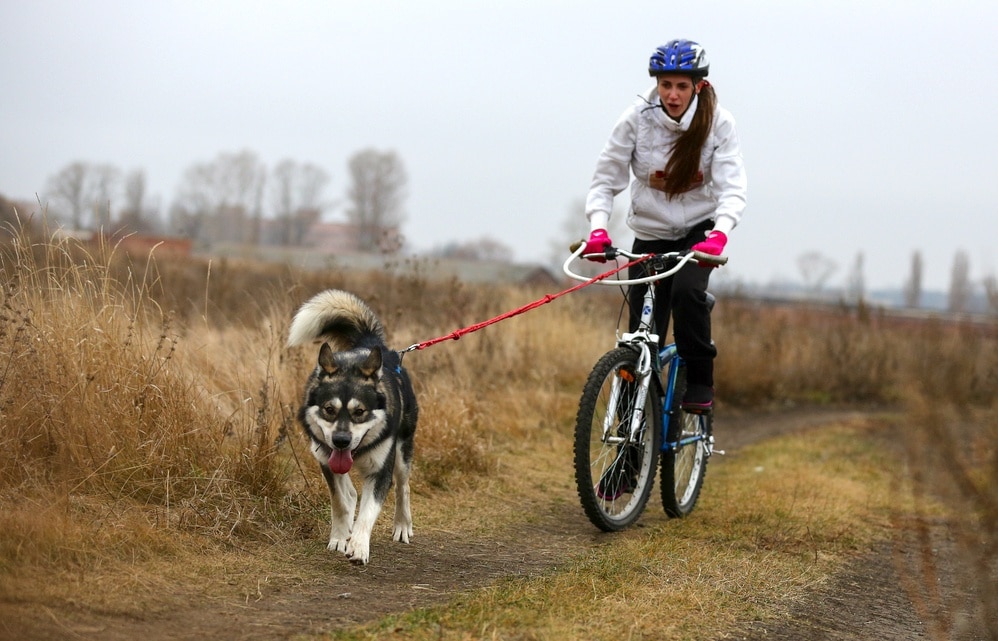

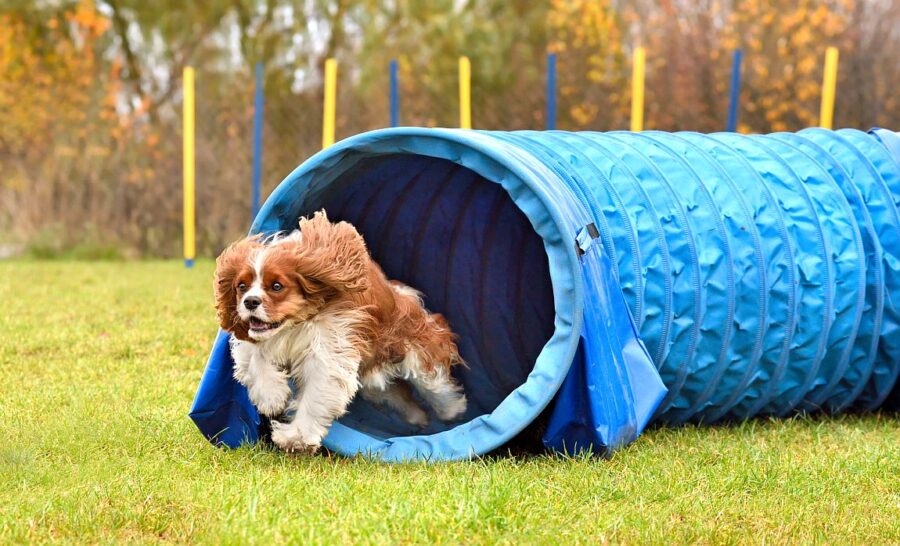


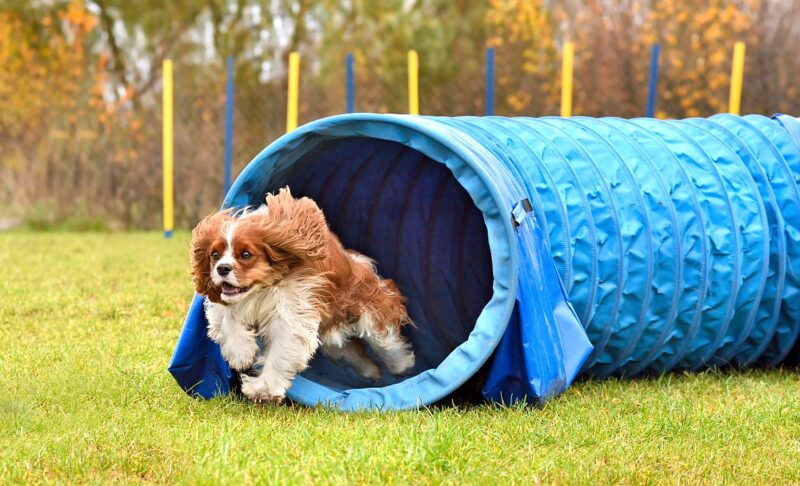
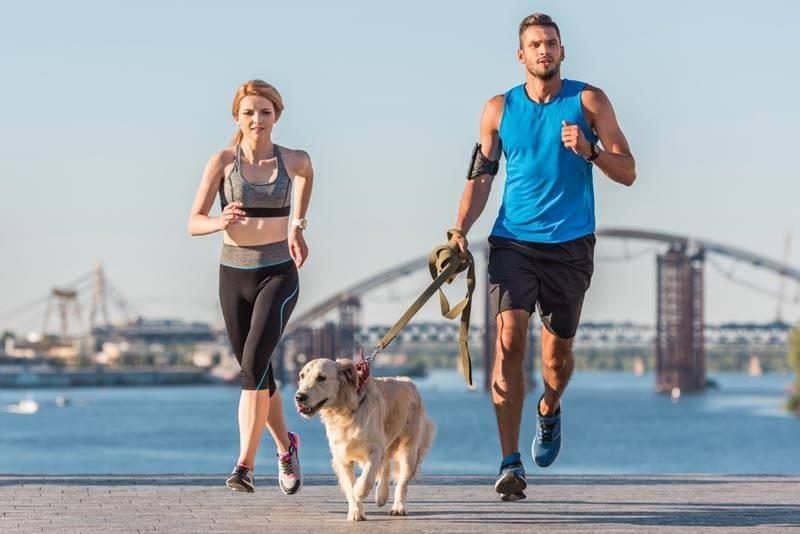
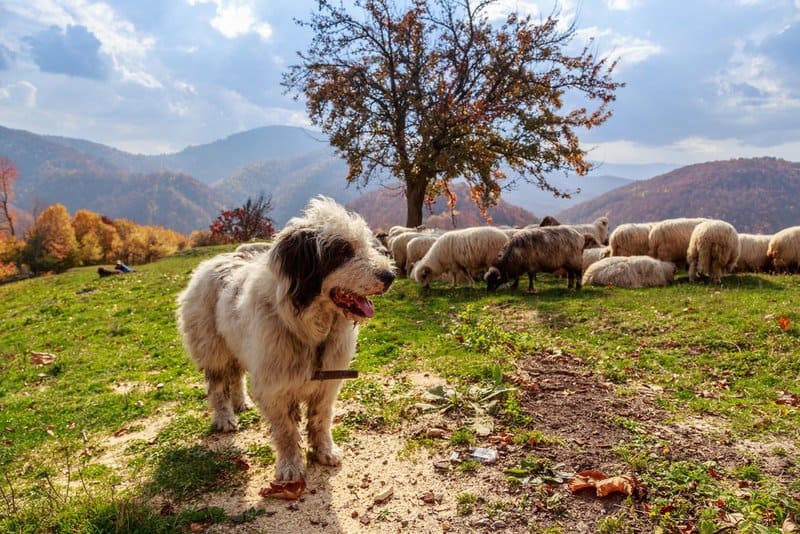
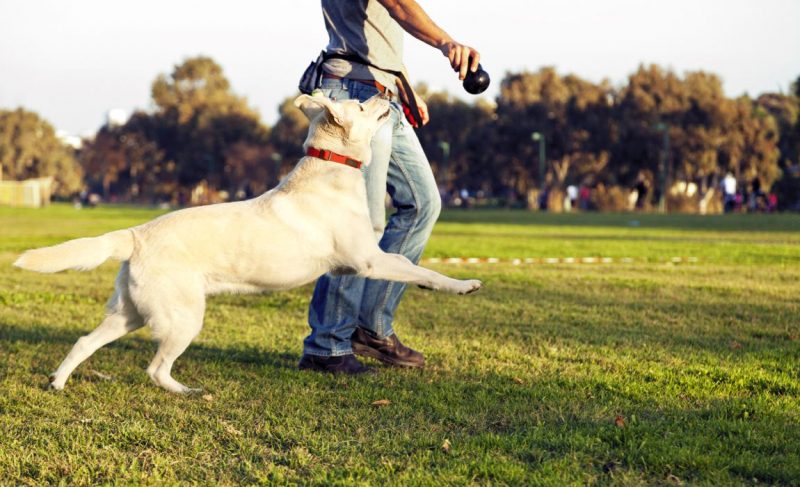
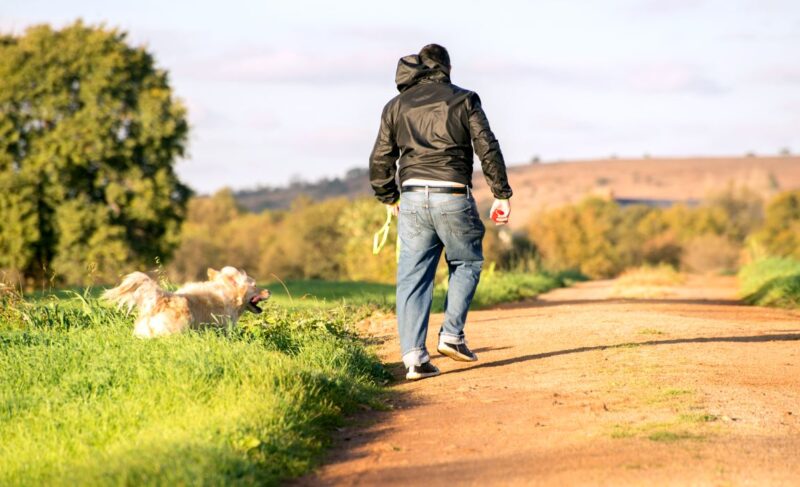
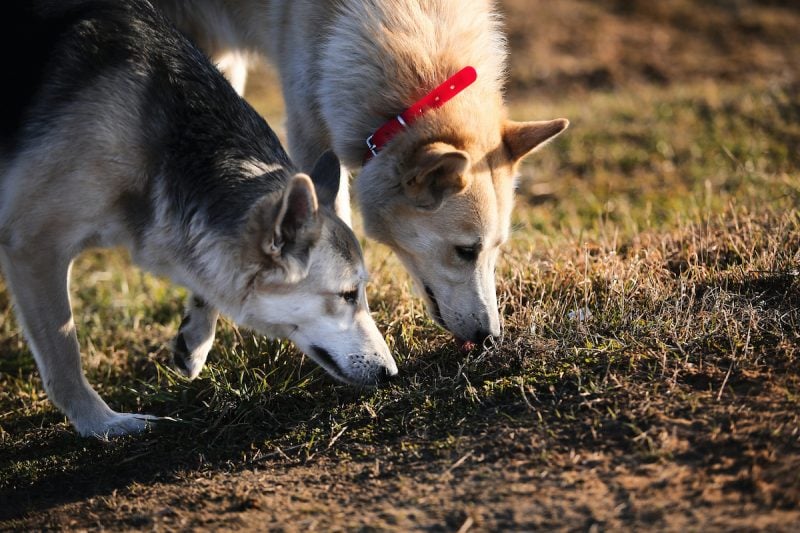

Leave a Comment